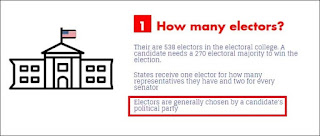Confusing But Not Amusing
The electoral college was added to the U.S. Constitution as a compromise. Some wanted Congress to elect the president. Others wanted popular vote to determine the outcome. The result was the electoral college, according to the National Archives.
There are 538 votes in the electoral college. Each state gets as many electors as they have members of Congress (House and Senate). Electors are chosen at the state level, and state laws vary on the selection process. In order to win a presidential election, 270 electoral votes are required.
But why was the electoral college process established in the first place? Some argue (like this commentary) that it was to balance interests of large urban areas and lower-density rural areas. Others argue that the Founding Fathers didn’t trust the public to elect a candidate. After all, it was difficult for ordinary citizens to gather adequate information about candidates in the 1700s. That thinking has been obsolete for years.
Repealing the Electoral College by constitutional amendment is a tall order, but there's an easier and very practical way to elect the president by direct popular vote. It's called the National Popular Vote Interstate Compact - an agreement by participating states to award all their electoral votes to whichever candidate wins the nation's popular vote. The agreement takes effect only when joined by states whose electoral votes total "270" a majority.
So, like most matters of history, the logic behind the current electoral process — and even its origins — are disputed.




Comments
Post a Comment